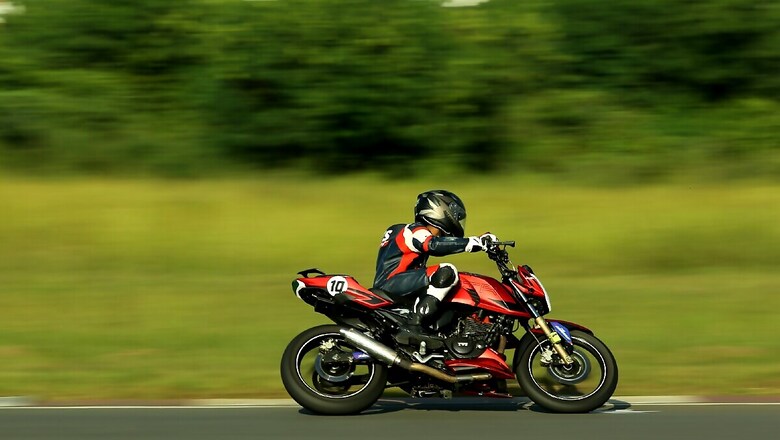
views
This year as COVID-19 robbed most of us of several opportunities, TVS’ invitation for the fourth season of the Young Media Racer Program put a smile on my face. On the 19th of November, a group of 14 journalists were flown to Chennai for, what turned out to be, an intense, exhilarating, enlightening one-day racing training with TVS racing academy.
After a sumptuous breakfast early in the morning of 20th, we set out for the Madras Motor Racing Track at 7:00am. Being my first time on a race track, I was tackling a multitude of emotions, scared, anxious, excited, and whatnot. After a few formalities dictated by new norms (temperature checks and sanitisation), we were directed to the pit. The morning began with a set of paperwork after which we got ready for our first classroom session of the day. HK Pradeep, a racer in the rally discipline who used to race for TVS, kicked off the session with a brief history of the Young Media Racer Program (YMRP). In its fourth season now, the YMRP aims at putting out a word about TVS’ works in India’s motorsport arena.
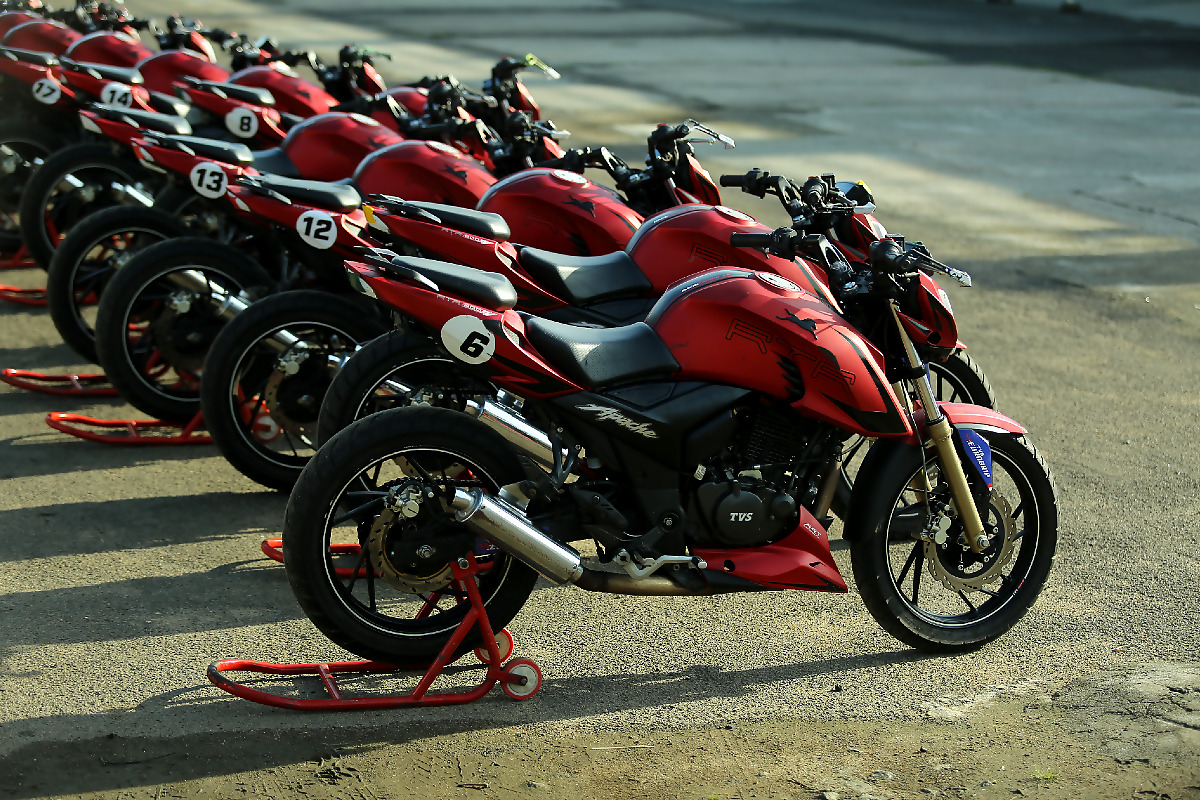
Learning Throttle Control
The classroom session then proceeded to the business of the day, starting with basic intricacies that one needs to know during a track day. This included the importance of race marshalls around the circuit, different kinds of flags, and rules to enter and exit the pit lane. Everyone was handed a map of the track before being split into two batches for the first session. The racers then proceeded to collect their racing suit, racing boots and gloves from the store. The first session was aimed at spotting the marshalls and throttle control. For this, each batch was split into two with each one under the supervision of either Jagan Kumar or KY Ahmed. Racers were asked to maintain 4th gear throughout the lap and attack corners without touching the brakes. As the first batch pitted after ending their session, our batch was asked to suit up and get on the bikes. The race-spec Apache felt odd beneath me. It was lighter and felt more friendly. In comparison to the bikes that were used last year, the 2020 bikes sported TVS’ Eurogrip tyres which proved to be a worthy change later in the sessions.
Nonetheless, we lined up at the pit exit and I managed to secure a spot right behind Ahmed. As the green flagged was waved, we set off onto the track maintaining 60kmph till we exited the pit lane. At each corner, the trainers had taped an ‘X’ denoting the racing line that one needs to follow. Ahmed showed us the marshall’s locations and towards the end of each lap, each racer would switch and take the last position.

Getting Seasoned to Speed
After the track session we were again directed to the classroom for the most important lecture of the day. Riding position and vision. Harry Sylvester, a former racer for TVS, taught us the importance of body positioning while attacking corners at high speed. ‘knee out, elbow out’, this was the formula that Harry asked us to carve in our minds. Then came the importance of vision. Unlike riding on the streets where there is a concern of potholes and other obstacles, on a track a rider is supposed to look far ahead into the exit of the corner. This was probably the most crucial aspect of racing. Other racers, your bike and everything else should be a part of your peripheral vision. Soon after the classroom session ended, we were back on the track to test out the lessons.
In the first lap, after a dreadful moment when my bike wobbled insanely at 110kmph, I slowed down. I could not figure out where I went wrong, I ticked the boxes in my mind. Knee out, elbow out, all was right. However, it was when I pitted when Ahmed told me that the knee which is tucked in during a corner should hug the tank tightly, and when I fixed that, the bike was planted as a tree through corners. During this session, racers were asked not to hold back and push as much as they could. And with a few mistakes here and there, I started getting seasoned to the intricacies, once the lessons and its implications on the track reached unison, the tarmac felt like a temple. Serene and void of all chaos. Just calculations and instincts that dictated my next move.
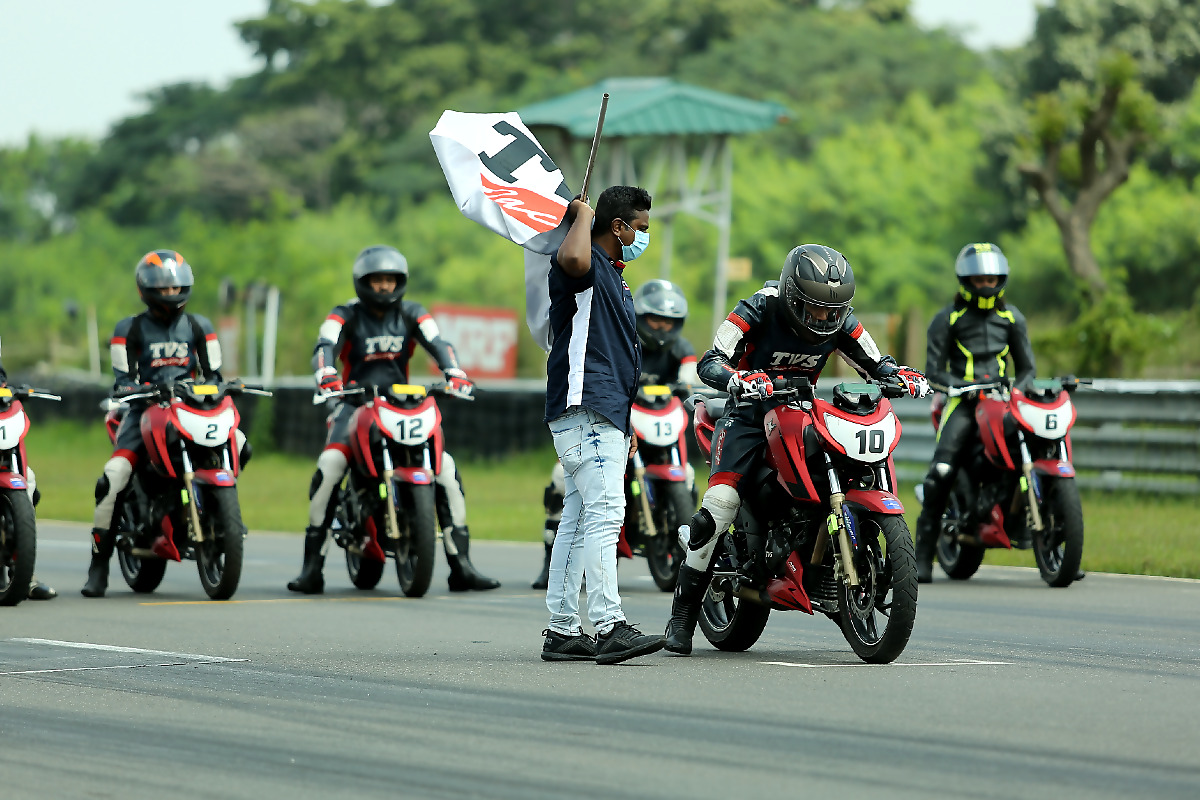
Lights off!
As we wrapped up the session, the next classroom session was short, teaching about how to properly execute a race launch and braking. At the track, while testing it out, we got two attempts each. Harry first went through the countdown and explained the procedure. While my launch in the first attempt was passable, my braking went sideways as I managed to dominantly use the rear brakes, which is ideally not preferred. However, second time around, I managed to utilise engine braking together, reducing my braking distance by a huge margin.
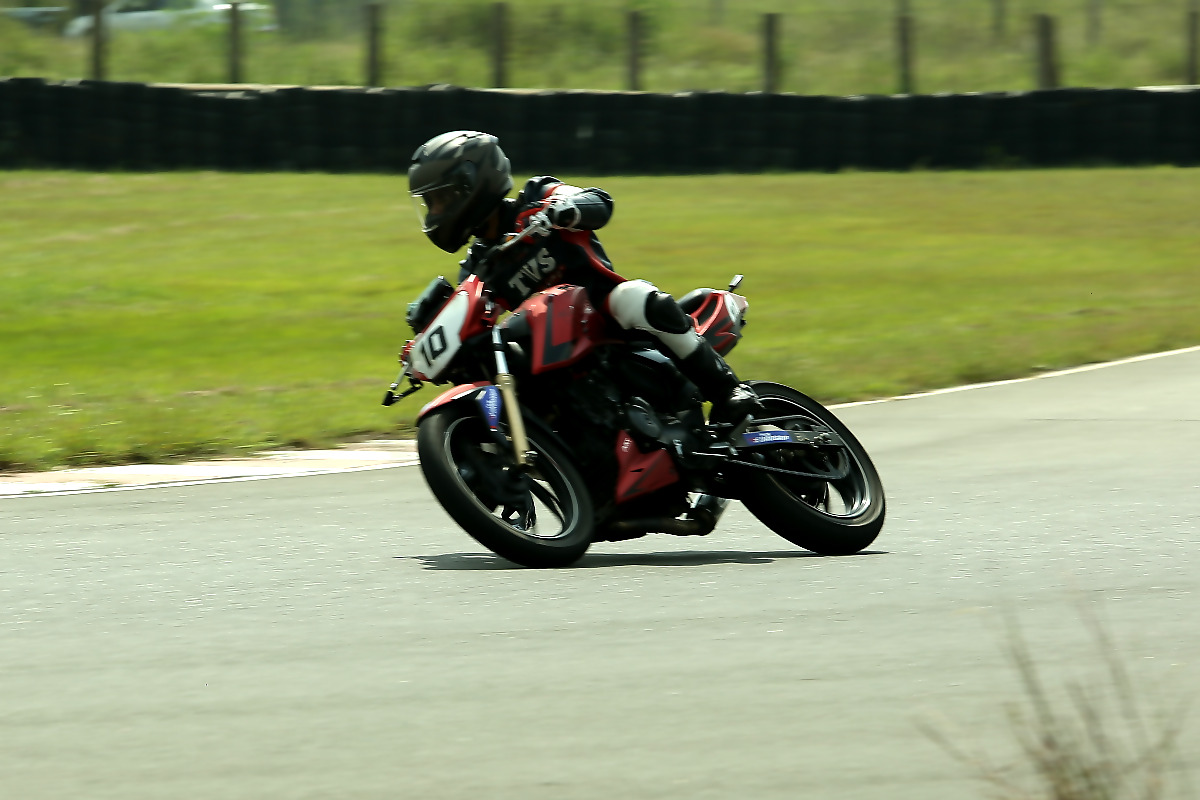
Qualification and Free Practice
The following classroom session was solely to explain the proceedings after lunch, which was 20 minutes of free practice followed by 3 laps of qualification.
We ate light, and rushed back to the pit to get our suits back on. I was looking forward to free practice all afternoon. And couldn’t wait to iron out a few places where I was losing valuable seconds. Since I could not estimate the caliber of other racers, there was also a fear of not qualifying in the end. Hence, the free practice was necessary. After the first two laps, the lessons in my head turned into instincts, I was no longer telling myself ‘knee out, elbow out’. My knees and elbows knew what to do. The rhythm was ecstasy right when I remembered Pradeep talking about the throttle being music at each corner. Soon, the practice session came to an end and we pitted. I took off my helmet with a grin on my face. I was ready. Ready to not necessarily be the fastest out there, but to push my limits and have fun while at it.
The practice lap began and the riders were being sent in a batch of 5 each. I was number 10 which meant I was in the second batch. Ahead of my session, I drank a can of lemonade to keep the risk of dehydration out of the way. And as the first batch pitted back after the session, it reminded me of the exams that we gave as students. The riders that were yet to go, huddled up around the ones who were done with their session to ask how they did after all.
Soon, I was on the saddle waiting for the green flag. In the scorching heat, I was breezy and calm. And as the green flag was waved, I set off. I completed the flying lap at 80 percent and started pushing as soon as I crossed the grid. There was a sense of harmony, lap after lap as I crossed the finish line, I told myself, ‘that was a good lap’ and it was. After the session ended, we got back to the pits, changed into our normal clothes and returned our racing suits. On the track, flexes were erected to announce the timings. After a few names that made it to the race in December, mine came on the 7th position with my fastest lap being 2:29:937. The fastest rider to finish first clocked in at 2:23:233 while the last rider did it in 3:11:775.
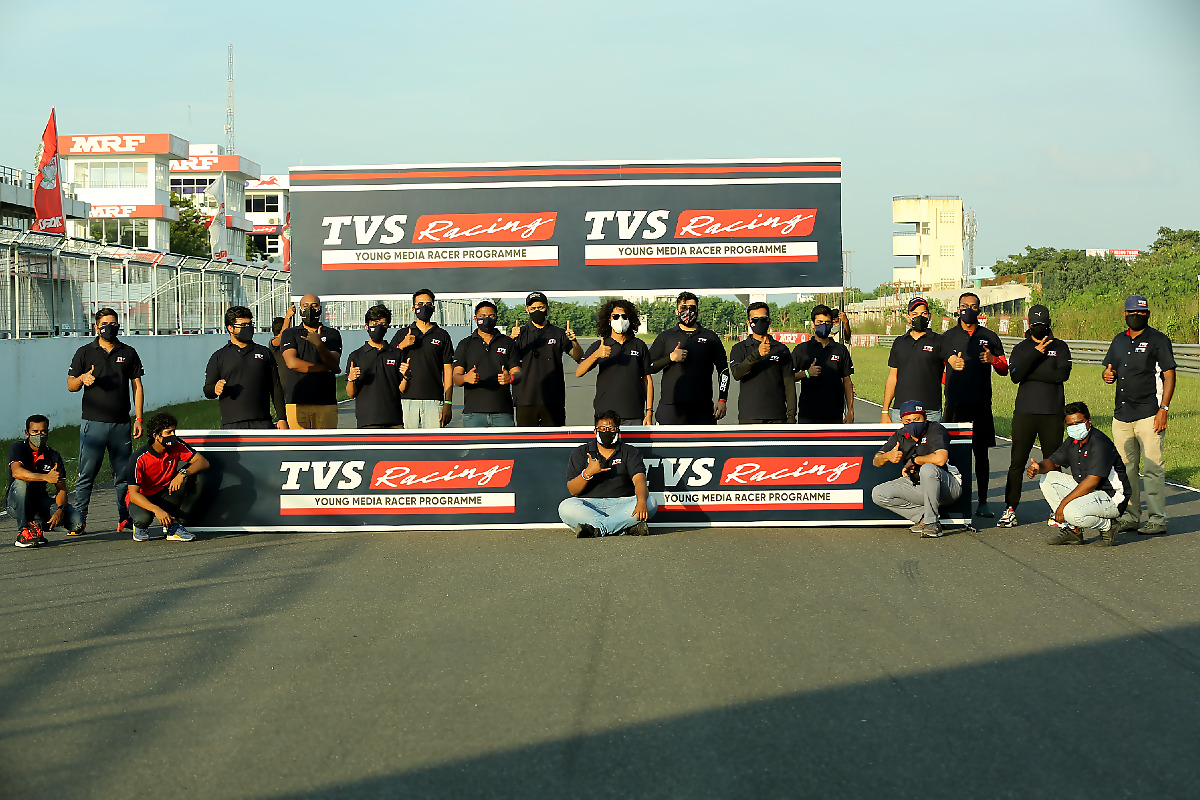
Conclusion
As the certificates were handed out, I was nothing but grateful for being able to be a part of such a program. So much was learned, so much was unlearned, all of which only helped me become a better rider not only on a race track, but also on the road. As I write this, a part of me cannot wait for the upcoming races that will be held along the sidelines of the Indian National Motorcycle Racing Championship (INMRC). More talents, more racers more fun. But at the end of the day, in a classroom with no walls, in a classroom with chicanes, we evolved the most.
Read all the Latest News, Breaking News and Coronavirus News here
















Comments
0 comment